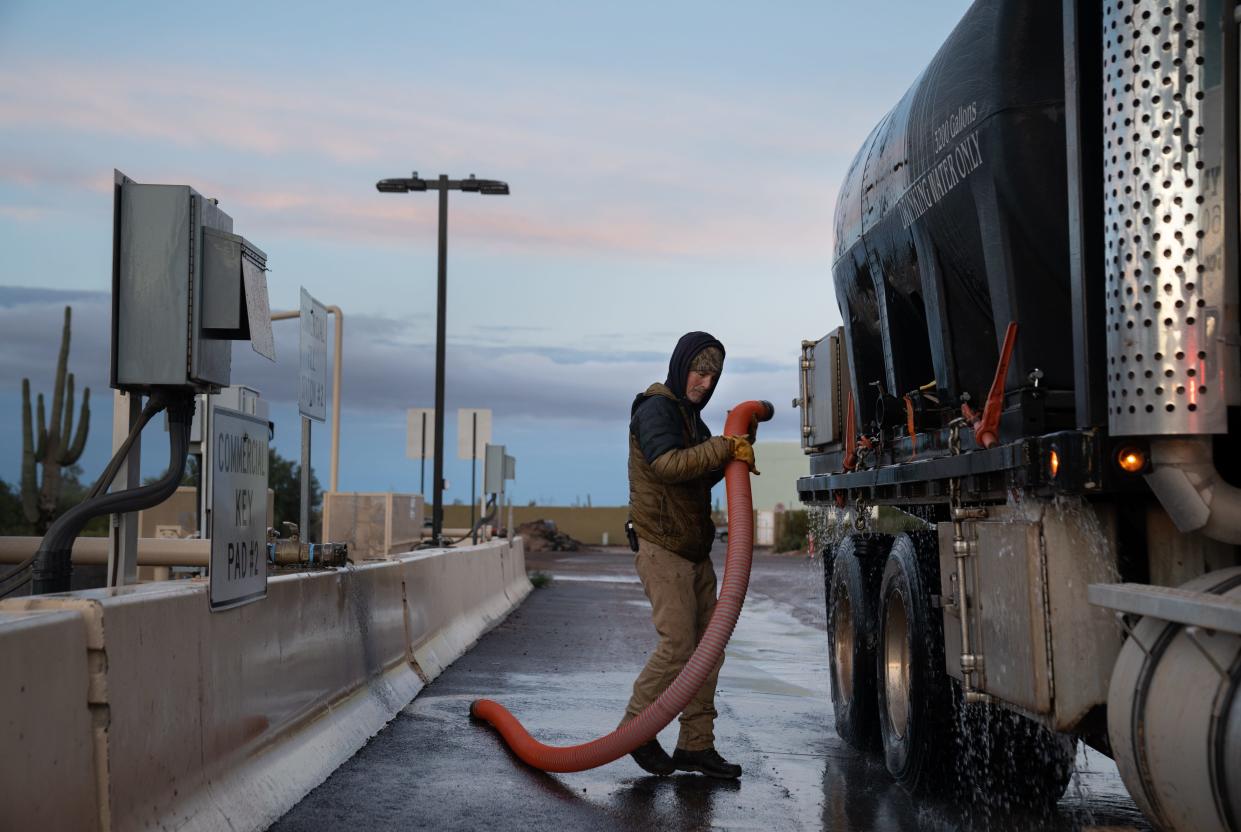Arizona is not out of water, despite all those headlines you might read

The national press has had a field day with two not-so-positive Arizona water stories.
About 500 homes in the unincorporated community of Rio Verde Foothills can no longer haul water from Scottsdale, the neighboring city to the south.
Meanwhile, a state-produced model has found that the area north and west of Buckeye does not have enough groundwater to support future massive developments.
They’re alarming stories, but the coverage has piled on the hyperbole. Some headlines have made it sound as if an entire “Arizona town” was cut off.
One even took a giant, misleading leap: “Phoenix runs out of water.”
Arizona is not living with its head in the sand
The Colorado River – once 40% of the state’s water supply – is dwindling. About 80% of Arizona and about 20% of its population has no rules on groundwater pumping, which is draining many of our rural aquifers.
Add in these troubles sprouting in metro Phoenix, an area covered by the state’s most stringent groundwater management rules, and we’ve got urgent issues that require urgent responses.
But the headlines make it sound as if we’re completely botching our jobs as water stewards.
That’s not entirely fair, either.
Judge rules:Scottsdale doesn't have to serve Rio Verde Foothills
Most metro Phoenix cities have spent decades storing water underground for a (non-)rainy day, for example. They have long recycled most of their wastewater, though we don’t yet drink it.
And while much of the coverage has focused on the fact that there isn’t enough water in parts of the far West Valley to support thousands of acres of future development, it glosses over why that growth may never occur:
Because we had the foresight decades ago to create an assured water supply program, which requires builders to prove they have secured enough water for the long haul before they can plat lots.
We have water protections. They need shoring up
Is that program failproof? No.
The root cause of Rio Verde Foothills’ water problems is that state law allows property owners to subdivide land into less than six lots and avoid requirements to prove they have secured a 100-year water supply.
Homes were built solely on the promise of hauled water. The potential risk of such a deal was glossed over with homeowners. And despite all the negative coverage lately, people are still building in the area.
It doesn’t matter that these so-called wildcat lot splits encompass a fraction of the homes we build every year. Or that not all homes in Rio Verde Foothills are affected, just those that relied on Scottsdale for hauled water.
The headlines on repeat are that Arizona doesn’t have enough water to grow or even sustain existing residents.
The story is more nuanced than the headlines
The full story is more nuanced.
Water is still being hauled to Rio Verde Foothills, albeit from other spotty sources that are vastly more expensive. Residents haven’t lost water; they’ve lost access to cheap water.
That is unlikely to change if EPCOR, a private water provider, is given the green light in April to more permanently serve these residents. Solving the affordability problem won’t be easy.
Meanwhile, on the far west side of the Valley, developers either must find renewable water sources to build on large swaths of open desert or find affordable ways to grow closer in areas with the capacity to serve new residents.
That doesn’t mean growth is done.
It means we’ll have to rethink how and where we do it, and no, that won’t be easy, either.
Want to counter the narrative? Then up our game
Fixing the cracks through which some development has fallen would be a good start.
In Rio Verde Foothills, the solution cannot simply be to force Scottsdale to serve non-residents. We need to tackle the root problem, which means we need to rein in wildcat lot splits.
Lawmakers could change how we define “subdivisions” – that might be the cleanest fix. Or they could give counties more power to say no to homes that plan to haul water, particularly in areas like Rio Verde Foothills where groundwater is spotty.
In the West Valley, lawmakers must address a proliferation of “build-to-rent” homes, which are touted as a much-needed affordable housing alternative but also aren’t required to prove a long-term water supply before building.
If civic and elected leaders want to counter the narrative that Arizona is irresponsible, they need to get better at telling the full story – which, yes, means more clearly touting the things we’ve done well.
But because perception is reality in water, and virtually everyone else has similar success stories, they also need a clear plan – shared loudly and on repeat – for how they intend to up our game.
And, more importantly, the resolve to do it.
Reach Allhands at joanna.allhands@arizonarepublic.com. On Twitter: @joannaallhands.
If you love this content (or love to hate it – hey, I won't judge), why not subscribe to get more?
This article originally appeared on Arizona Republic: Arizona is not out of water, despite what you might read

